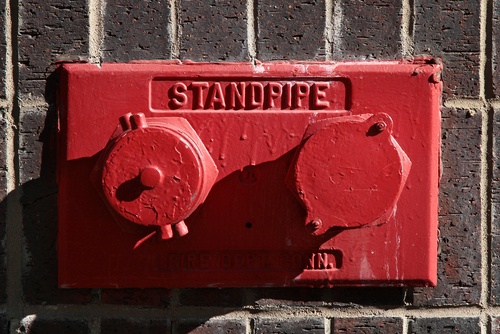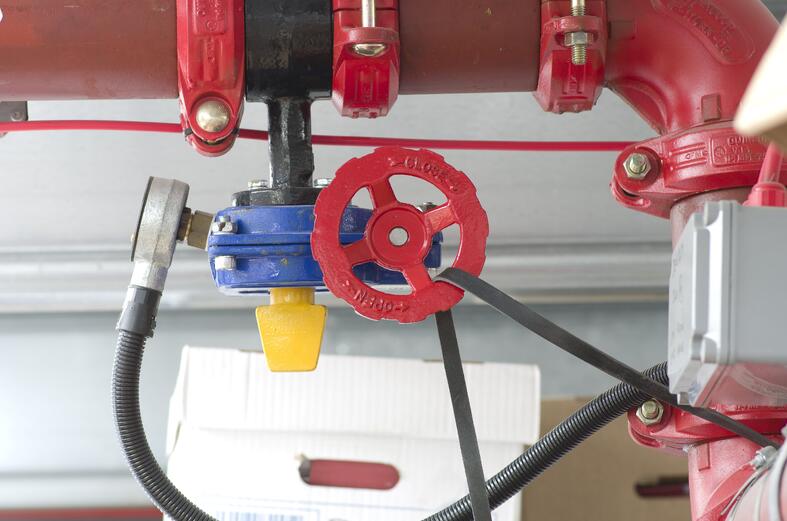Our Standpipe Design solutions are designed to ensure optimal performance in extinguishing fires in large buildings regardless of outdoor temperatures.
We identify & eliminate unnecessary energy consumption, leaving you with maximal functionality for the minimum annual energy cost.
All of our systems are designed with longevity in mind, saving you maintenance costs down the line.

Standpipe systems play an integral in firefighting efforts in larger buildings that are over 30 feet in height. Standpipes have various hose connections often at the stairwells of the buildings which can be accessed by authorized personnel or firefighters to extinguish the fire. This system needs well-equipped professionals to properly design it for you. NY Engineers is an unrivaled company to provide standpipe designs, installations, and maintenance in tall buildings
We are one of the fastest growing MEP design firms in the construction industry. We pride ourselves on having a fast turnaround while providing cost effective solutions. We are licensed in 50 states and are your one stop shop for all MEP design needs.
We are licensed in all 50 states!
We design to the perfection
Enjoy our lightening fast turnaround
We have completed so far!
Our designs are approved by DOB in one go
The best service experience in the market

A standpipe design basically entails a network of pipes that connects a water supply to hose connections in a building for purposes of fire extinguishment by firefighters or other trained personnel in the building. The design is often done in conjunction with the building design more especially because standpipe designs are mandatory in certain buildings. If your building does not meet the requirements set out in NFPA 14 and the adopted International Building Code then you shouldn’t worry about this design.
Nearby Engineers New York Engineers technicians have been designing, installing and maintaining these systems for a long time now. Alongside your building design, we can impeccably incorporate the standpipe configurations to save you time and to expedite the building approval process.
Unless your building structure meets the necessary standpipe design requirements and installation, local building authorities will give you a tough time to get it approved. With our engineers, such efforts of getting the building approved can be an absolute breeze.
In other buildings, standpipe system may be paired with the sprinkler system. Because standpipe system can be operated in many ways and provides a greater pressure at hose connections, it is more efficient in extinguishing blazing fires than automatic sprinklers are.
Sprinkler systems are, however, still effective and remain enforceable in all commercial and residential buildings. We also provide designs, installations and maintenance for all sprinkler system assortments.
It is actually a good thing to combine sprinkler systems with standpipe system to optimize your firefighting strategies. However, note the design and installation specifications needed for each of the system. With Nearby Engineers New York Engineers , however, you do not have to worry because we take care of all design, installation and maintenance specifications. Our engineer’s signature ascertains building authorities in Chicago that indeed the systems implemented are of top notch quality.
Oftentimes, standpipes act before automatic sprinklers act. There are various types of standpipe systems and we will highlight them later in this article.
Besides being mandatory to design and install standpipe systems in some buildings, these systems play an integral in firefighting efforts in larger buildings that are over 30 feet in height. Standpipes have various hose connections often at the stairwells of the buildings which can be accessed by authorized personnel or firefighters to extinguish the fire.
The good part about standpipes is that they can be operated in many ways. We can achieve you fulfill either of the ways.
NFPA 14 stipulates the design specifications location of the hose connections, flow rate and the pressure in psi that each should discharge. These systems are classified into classes which we will elaborate further below and these classes guide to design and installation specifications.
Imagine if a large building were to catch fire in all the passages with occupants still locked up in their rooms. This could be disastrous to both properties and to human lives. Standpipes can avoid such a possible disastrous occurrence by always being accessible when the fire emergency arises.
In a full-blown fire, standpipes’ discharged water can create a pathway for the occupants of a building to evacuate and evade the imminent danger. The water pressure is sufficient to suppress blazing fires. Note that the building codes require different pressure settings throughout the building. For instance, lower floor levels should have pressure reducing valves because the pressure at such levels tends to be abnormally high. To master such pressure fluctuations and calculations, Nearby Engineers New York Engineers can help you.
Now that you are well rounded with the benefits of having the standpipes in your building, you may as well consider having them designed for you. Besides being mandatory for these systems to be designed by professional engineers, they are complex and very sophisticated for an amateur to design.
One has to take into account the piping network on how to align it throughout the building. Standpipes differ with size, design, and location. All these design parameters have to be factored in when designing these standpipes. For an amateur, the process could seem cumbersome, let alone being disqualified by NFPA 14 stipulations.
Upon requesting standpipe design we assign a well-rounded knowledgeable and experienced team of engineers to provide you with the best you can get. Our trademark is that we offer a 50% faster turnaround than all our competitors.
Nearby Engineers New York Engineers is composed of a multidisciplinary team that include architects, plumbers and engineers among others who work in synergy to provide the best designs in buildings, sprinkler systems and standpipes.
After designing standpipes, the installation part follows. That’s the part we also excel in. Our technician are well-versed with all the installation configurations of these pipes. Among others, the hose connections should be put in accordance with the stipulated NFPA 14 standards. There should also be pressure reducing valves that manages the pressure at lower levels.
Even more seemingly cumbersome is the need for pressure and flow rate calculations. Moreover, consider the complexity of automatic standpipes and their synchronization with fire detection systems. All these calls for expertise installations to avoid compromising the reliability of these pipes.
As mentioned above, standpipes are classified in three classes which help guide the size and pressure of the hose connections. These are named as Class I, Class II and Class III.
The choice does not end here. You still have to choose between automatic, manual, dry, wet, or semiautomatic standpipe systems.
In addition to the standpipe classification, we have types of these designs. Knowing these designs will help you make the right choice. Our engineers can stand with you at all the times from the choice to the design, installation, and maintenance of these systems to ensure that your firefighting efforts are never in vain on account of poor designs.
The types of standpipes include the following:
Not sure which system to choose? New York Engineers can help you reach conclusions with regard to these systems
Note that standpipe systems are not necessarily applied or needed in any building. This is perhaps the main difference between these systems and sprinklers which are virtually needed in all buildings. A single floor building, for instance, may not need the standpipes. Large buildings 30 feet tall are relevant candidates for the design, installation, and maintenance of standpipes.
Standpipes are installed in accordance with the IBC 905.3 “Required Installations”. This standard stipulates precisely what requirements are per the class of these systems. Having engineers who are well-equipped with the requirements of such standards is a great advantage. At New York Engineers we strive to simplify the designs and installations for your clients.
In a nutshell, standpipes are required under the following conditions:
If your structure does not fall under the above-mentioned criteria, then probably you do not need these standpipes installed for your building.
For further queries, you can contact us to give you clarity. Whichever building structure you have, our engineers are sufficiently equipped to excel in it.
Standpipes should be maintained on scheduled intervals to ensure their continued efficiency. NFPA 25 (Standard for Inspection, Testing, and Maintenance of Water-based Fire Protection Systems) requires these standpipes to be monitored on a regular basis. There should first be the identification of the important components of these pipes. For example, valves and connections should be labeled as such to eliminate confusion when the need to use them arise. Nearby Engineers New York Engineers will accomplish such requirements.
Our engineers will, in accordance with the NFPA 25 inspect the standpipes to ensure that all control handles are still in place; cap gaskets and hose connections have not rotted; there is no physical damage to the system; gauges and valves are still operational; no leakage in the pipes; and many more inspection points.
After the inspection, we will draft a plan to maintain the system accordingly. We strive to make your system as efficient as possible so you can stay prepared in the event of a fire. Maintenance can either be done annually or any other convenient interval. The standards also require weekly schedules of maintenance.
Given the complexities of the standpipes, you can already notice that professional engineers have lots of work to do. This system needs well-equipped professionals to properly design it for you. New York Engineers is an unrivaled company to provide standpipe designs, installations, and maintenance in Chicago tall buildings. Our designs are revered in the industry and have saved my properties and lives so far. While we provide the fastest turnaround more than our competitors we do not compromise the quality of this system.
Our technicians are well rounded with the NFPA 14 and NFPA 25 as well as International Building Code adopted standards pertaining to the design, installation, and maintenance of standpipe designs. We therefore assure you the best design at an affordable price.
382 NE 191st St , Suite 49674
Miami, Florida 33179276 5th Avenue, Suite 704 #904
New York, NY 10001